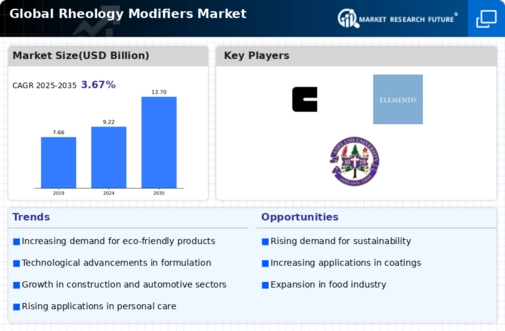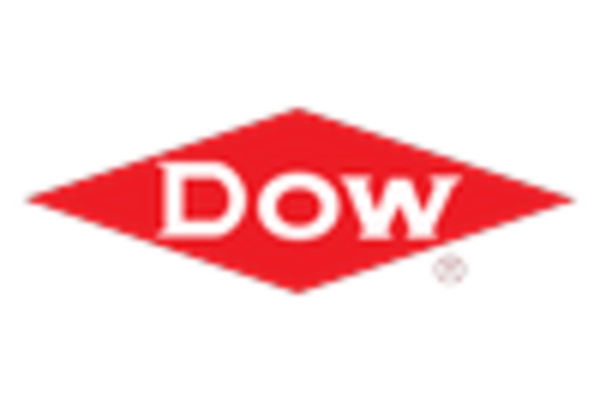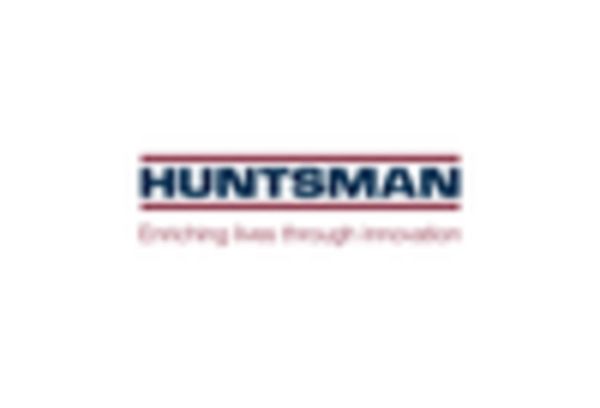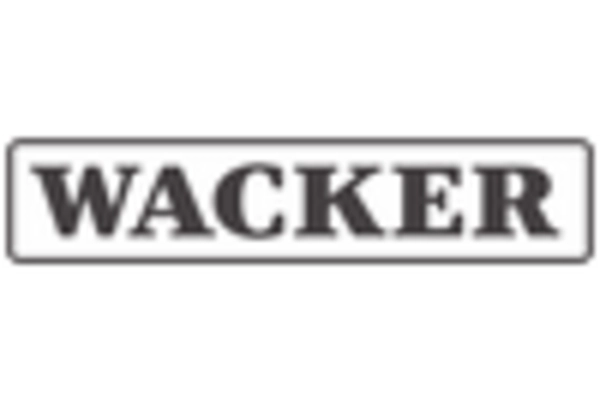Market Analysis
In-depth Analysis of Rheology Modifiers Market Industry Landscape
The Rheology Modifiers Market is undergoing dynamic changes influenced by various factors that shape its growth trajectory.
Expanding Applications Across Industries: A primary driver in the market dynamics of rheology modifiers is their versatile applications across industries. These additives are extensively used in paints and coatings, cosmetics, pharmaceuticals, and construction materials to control and modify the rheological properties of formulations. The expanding range of applications contributes significantly to the growth of the rheology modifiers market, as industries seek precise control over viscosity and flow behavior.
Growth in Construction Industry: The dynamics of the rheology modifiers market are closely linked to the growth of the construction industry. Rheology modifiers play a crucial role in enhancing the workability and performance of construction materials such as concrete and mortars. As construction activities continue to rise globally, the demand for rheology modifiers in construction-related applications contributes to market expansion.
Technological Advancements: Ongoing advancements in material science and formulation technologies play a pivotal role in shaping market dynamics. Innovations focus on improving the performance characteristics of rheology modifiers, including efficiency, compatibility with different formulations, and eco-friendliness. These technological strides contribute to the dynamic nature of the market by offering enhanced functionalities and addressing evolving industry needs.
Demand from the Paints and Coatings Sector: The dynamics are significantly influenced by the demand from the paints and coatings sector. Rheology modifiers are essential in formulating coatings with desirable flow and leveling properties. As the demand for high-performance coatings grows, driven by automotive, architectural, and industrial applications, the market for rheology modifiers is expected to witness sustained growth.
Regulatory Compliance: Compliance with regulatory standards and environmental regulations is a key factor influencing market dynamics. The rheology modifiers market is impacted by regulations governing the use of certain chemicals and the need for environmentally friendly formulations. Adhering to these standards is crucial for market players, influencing product formulations and manufacturing processes.
Shift towards Water-Based Formulations: The market dynamics are shaped by the industry's response to environmental concerns and the shift towards sustainable practices. There is a growing preference for water-based formulations over solvent-based alternatives in various applications. Rheology modifiers play a key role in formulating stable and efficient water-based products, impacting the market dynamics as manufacturers adapt to this shift.
Global Economic Factors: Economic trends, both on a global and regional scale, play a significant role in the rheology modifiers market dynamics. Fluctuations in currency exchange rates, economic stability, and overall industrial growth influence the demand for rheology modifiers. Adapting to economic shifts is crucial for market players to navigate and succeed in this dynamic market.
Raw Material Prices: The cost and availability of raw materials, such as polymers and clays, impact market dynamics. Fluctuations in raw material prices can influence the overall production cost of rheology modifiers, affecting pricing strategies and market competitiveness. Industry players need to monitor and adapt to changes in raw material costs for effective strategic planning.
Competitive Landscape: The dynamics of the rheology modifiers market are shaped by the competitive landscape, including key players, market share, and strategic initiatives. Intense competition fosters innovation, with companies focusing on product differentiation, quality improvements, and strategic partnerships to gain a competitive edge. The competitive dynamics create an environment where continuous improvement and responsiveness to market trends are essential.
End-User Preferences and Industry Trends: Understanding end-user preferences and industry trends is crucial for adapting to market dynamics. As industries evolve, the demand for specific rheological properties in formulations, such as thixotropy, shear thinning, or anti-sag characteristics, can shift. Market players need to stay attuned to these preferences to effectively position and market their rheology modifier products.










Leave a Comment